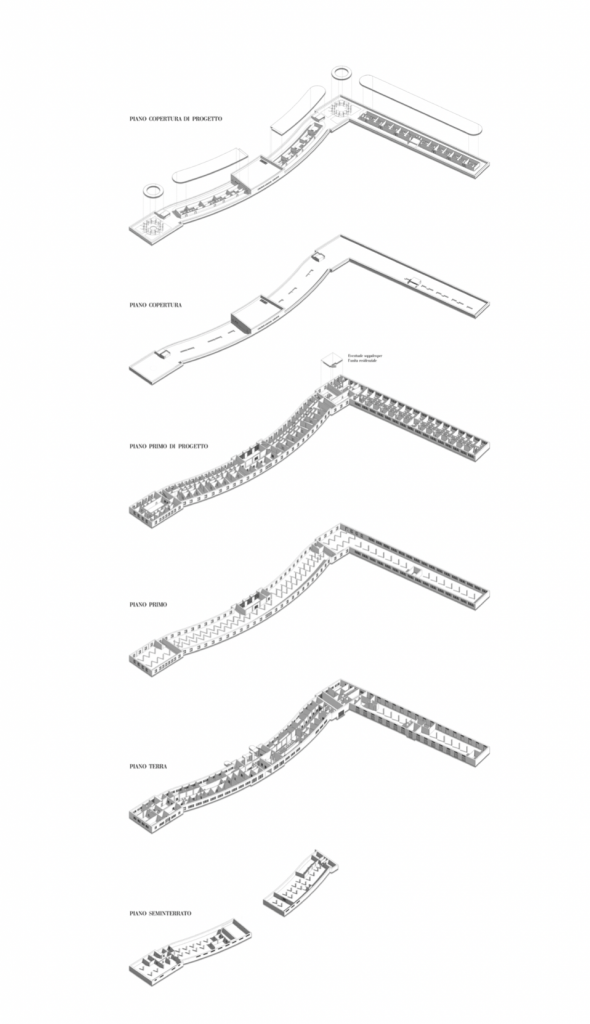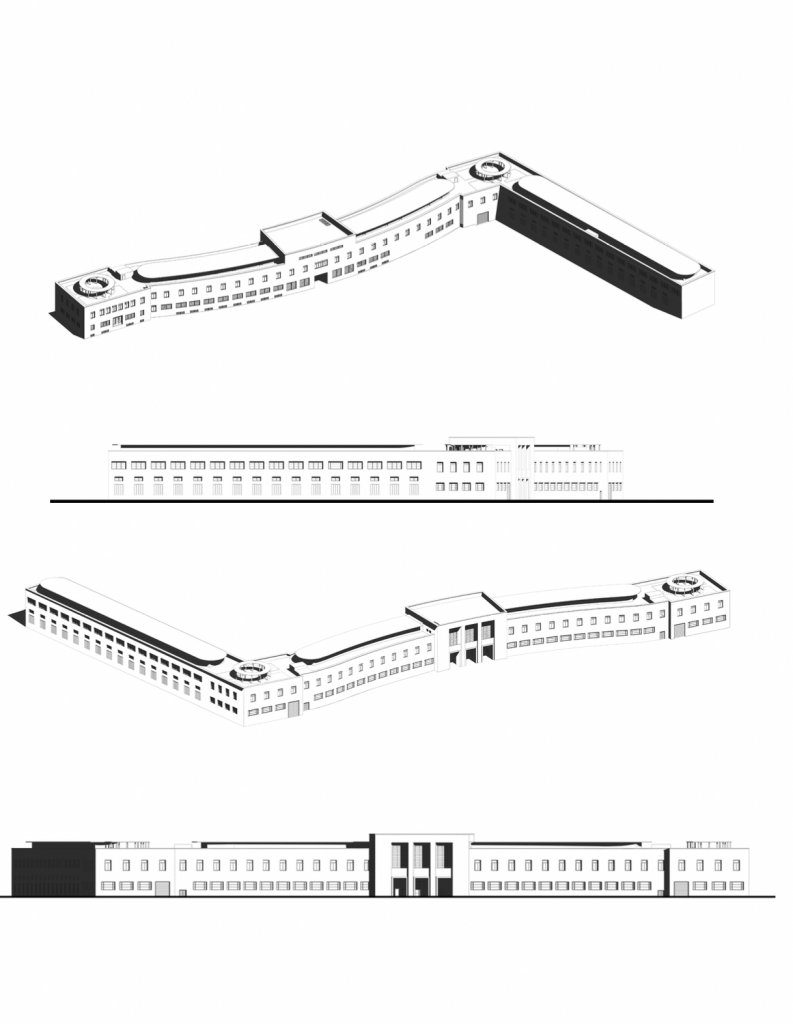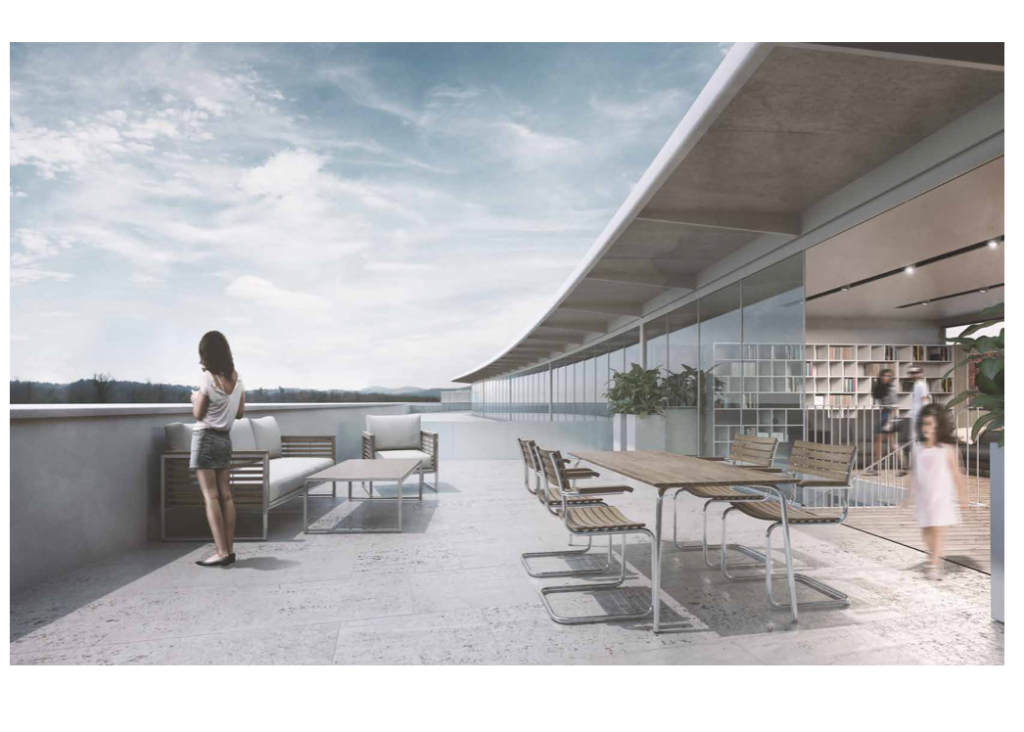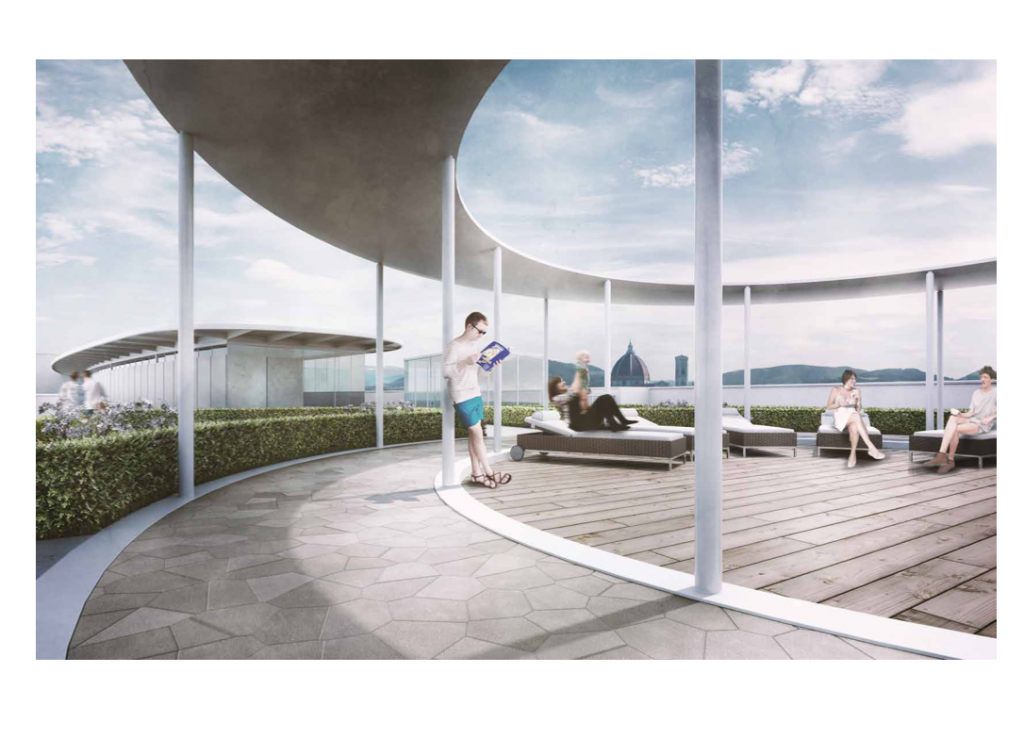Ex Manifattura Tabacchi Firenze
2018
L’intervento sull’edificio di via delle Cascine prevede la costruzione di un nuovo piano abitabile, edificato sulla copertura esistente e sviluppato longitudinalmente al fabbricato. Il tema affrontato è stato quindi quello di una rilettura della copertura del manufatto razionalista, comparando, raffrontando e studiando esempi vicini e coevi, e quello dell’inserimento nel complesso della Manifattura di un nuovo modo di abitare che tenga conto del contesto paesaggistico unico e irripetibile. Il vero recupero dell’edificio passa necessariamente per questa finalità: assicurare il rapporto della casa con la città.
La suggestione di questi edifici ci ha spinto ad intervenire con un segno lineare, contenuto in un forte senso di orizzontalità, sottile e arretrato rispetto al blocco esistente, quasi una lamina tra terra e cielo a sottolineare la potenza e la gravità dell’edificio. Una copertura piana, aggettante rispetto alle pareti degli appartamenti, pensata proprio come una “pensilina” sul terrazzo, percorre l’intera linea iperbolica delle facciate dell’edificio, arrestandosi laddove già il progettista (probabilmente Pier Luigi Nervi) aveva sentito la necessità di interromperla. Abbiamo dunque tre coperture piane che servono i tre blocchi di appartamenti e due “eccezioni”, anch’esse piane ma di forma circolare, posizionate agli angoli dell’edificio, dove la linea curva delle facciate si interrompe.
Lo sbarco sulla copertura delle scale esistenti (ma anche di quella riprogettata) è stato ripensato con la sostituzione di pareti e coperture vetrate, al posto della muratura, contribuendo così a dare un aspetto più leggero a questi blocchi di servizi e a non entrare in contrario con lo sviluppo della nuova copertura. Sul piano della copertura le unità abitative hanno l’ingresso dalla parte interna dell’intero complesso, dove sono anche disposti i luoghi di servizio (cucina, bagno, ingresso), mentre la zona giorno ha grandi aperture vetrate, sull’area esterna, affacciandosi da sud sul parco delle Cascine e da est sulla veduta del Duomo e di palazzo Vecchio, simboli della città.
Ex Tobacco Factory Firenze
2017
The intervention on the building in Via Delle Cascine pro- vides for the construction of a new floor, built on the existing roof and developed longitudinally to the building. The theme addressed was, therefore, that of a rereading of the coverage of the rationalist artifact, comparing, comparing, and studying examples close and contemporary, and that of the inclusion in the Manufacture as a whole of a new way of living that takes into account the unique and unrepeatable landscape. The real recovery of the building necessarily passes for this purpose: ensuring the relationship of the house with the city. The suggestion of these buildings pushed us to intervene with a linear sign, contained in a strong sense of horizontality, thin and backward compared to the existing block, almost a sheet between earth and sky to emphasize the power and gravity of the building. A flat roof, overhanging the walls of the apartments, designed just like a “roof” on the terrace, runs the entire hyperbolic line of the facades of the building, stopping were already the designer (probably Pier Luigi Nervi) felt the need to interrupt her. We, therefore, have three flat roofs that serve the three blocks of apartments and two “exceptions”, also flat but circular, positioned at the corners of the building, where the curved line of the facades is interrupted.
The landing on the roof of the existing stairs (but also of the redesigned one) has been rethought with the substitution of walls and glazed covers, to the place of the masonry, thus helping to give a lighter appearance to these service blocks and not to get in the way of the development of the new coverage. On the floor of the roof the housing units have the entrance from the inside of the whole complex, where are also arranged the service places (kitchen, bathroom, entrance), while the living area has large glazed openings, on the outside area, looking from the south on the Cascine park and from the east on the view of the Duomo and Palazzo Vecchio, symbols of the city.



